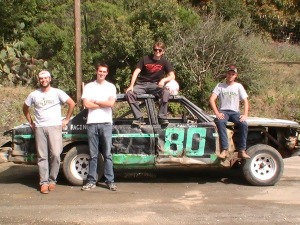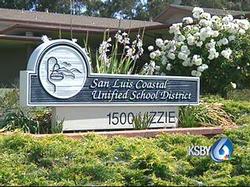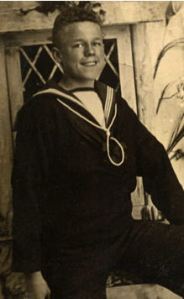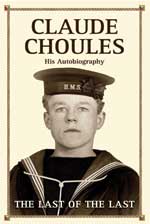Back to life: an old race car will soon race again!
June 7, 2011 at 9:35 AM | Posted in Uncategorized | Leave a commentChristian Rheinisch was told, “If you can make it turn right, you can have it.” The 1979 Buick LeSabre had been sitting helplessly, unused and abandoned, for five years. An inglorious ending to a car that had a racing pedigree at the Santa Maria Speedway. The car belonged to Grant Tucker, who Rheinisch knew through Kal Off Road Racing, a local racing team and fabrication business.
Rheinisch saw potential. In his own words, “The car is 90% there.” The frame was in good shape, and it already had a rollcage and racing driver’s seat installed. Setting up behind the Farm Shop building on the Cal Poly campus, Rheinisch began the mechanical work to bring “The Beast” back to life.
“If you can make it turn right, you can have it.”
-Grant Tucker, Kal Off Road Racing
Rheinisch is the founder and President of the Cal Poly Industrial Technology Racing Division, an organization he set up within the Industrial Technology Department. Rheinisch initially tried to set up his team as a school club, but he says those plans fell apart because of bureaucratic red tape. He found it easier to set up his team within the department as an official school activity. As such, the racing team is funded through the school, though Rheinisch will happily accept donations.
Right now, Rheinisch is one of only a handful of people who have worked on the car; he has no real “racing team” yet. But he hopes to get a dozen dedicated volunteers to race in events throughout California representing Cal Poly. He needs four or five drivers and several mechanics, of course, but he also says he is willing to take on anybody who is interested. “We need a cook.” He says, “Having a good cook with you when you go out to a race is a big deal. And this car does need to have a theme… if you’re an art major, and you think that painting a ’79 Buick LeSabre would be a cool senior project, let me know. We can make it an art car.”
Rheinisch has attracted interest from some groups on campus. The Industrial Technology Society, a club for Industrial Technology majors, and the Cal Poly Motor Car Association, a club for driving enthusiasts, are both in discussions to partner with Rheinisch and help his project. Russell Gruener, the President of the ITS, regularly helps out Rheinisch with his car on an informal basis.
“Having a good cook with you when you go out to a race is a big deal.”
-Christian Rheinisch, Founder and President, Cal Poly Industrial Technology Racing Division
Rheinisch’s first goal is to enter his car in the 24 Hours of LeMons race series. A pun on the famous LeMans endurance race in France, the LeMons is a series of races across the United States where beat-up old cars that have been fixed up are run for a whole day to see which cars survive. The event is known for being playful and sarcastic. Rheinisch says one team covered their Lincoln Continental in birch bark and raced in beaver suits. The series’ website says the event is “a breeding ground for morons” and asks its visitors if they want more spam e-mails.
There are three upcoming events in California.
- August 6: At the Thunderhill Raceway Park in Willows, near Chico.
- October 22: At the Infineon Raceway in Sonoma.
- December 3: At the Buttonwillow Raceway near Bakersfield.
Rheinisch hopes to enter his car in all three races, though he is doubtful it will be ready in time for the August race. He says he hopes to enter his car and racing team in several events during the school year as time and money allows.
“[Even] if you really don’t think you have anything you can bring to the table, we’ll figure something out for you,”
-Rheinisch
Rheinisch’s goals don’t end with his LeSabre. He says that he wants to build a new race car from scratch, a “franken-car” as he called it. He and other Cal Poly students would gather the numerous parts from whatever sources they could find and assemble the car themselves. The finished “franken-car” would then be tested and, Rheinisch hopes, entered into several races during the school year.
For now, though, Rheinisch is just looking for students to drop by behind the Farm Shop building and help out. He says the best way to volunteer is to get in touch with him. “[Even] if you really don’t think you have anything you can bring to the table, we’ll figure something out for you,” he says.
Locals try to prevent closure of Morro Strand State Beach
May 24, 2011 at 3:01 PM | Posted in Uncategorized | Leave a commentThe California State Parks are facing a $22 million cut in Gov. Jerry Brown’s proposed budget. To absorb this cut, 70 state parks are going to close by July of 2012. Morro Strand State Beach is one of the parks slated to shut down.
These parks were selected because they have low numbers of visitors compared to other parks. According to Sonomanews.com, even if these parks close 94% of the system’s annual visitors will not be affected. Furthermore, Paul Rogers of the San-Jose Mercury News says it is unlikely the parks would be “roped off”; he reasons that most likely the state will simply give up maintaining the parks.
Even this option draws criticism from Mary Golden, the Executive Director at the Central Coast Natural History Association. The association runs the Natural History Museum in Morro Bay and is lobbying to keep the beach open. She endorses AB 42, a bill that passed the State Assembly on Friday. The bill would allow non-profit organizations like Golden’s organization to run the state parks, keeping them open and staffed. These non-profits would have to make annual reports on their activities to the state. The bill was passed unanimously and now awaits approval in the Senate.
Coast Natural History Association. The association runs the Natural History Museum in Morro Bay and is lobbying to keep the beach open. She endorses AB 42, a bill that passed the State Assembly on Friday. The bill would allow non-profit organizations like Golden’s organization to run the state parks, keeping them open and staffed. These non-profits would have to make annual reports on their activities to the state. The bill was passed unanimously and now awaits approval in the Senate.
I spoke to Golden personally about her position on the proposed closure and on AB 42.
Golden encourages people to visit savestateparks.org for more information on what they can do to support the state parks.
Morro Bay entrepreneur shares his story of success
May 17, 2011 at 7:19 AM | Posted in Uncategorized | Leave a commentIf there is one thing Huy Ngo likes about being an entrepreneur, it is being his own boss. “Why earn money for someone else when you can earn money for yourself?” he says. That is why he has, in turn, owned a party supply store, a speed-dating service, a street donut stand, and a paralegal service. His brain is always bubbling with new ideas.
His latest venture is different, though. This time, he is involving the whole family in the business. His new family-owned restaurant at 1698 Main Street in Morro Bay will specialize in custom-to-order hamburgers and hot dogs as well as fresh-cut fries. It will also serve coffee and pastries in the morning, and primarily focus on attracting local customers. Everything in the restaurant will be under $10, he assures me.
Born in Vietnam, Ngo came to the United States as a small child and grew up in Morro Bay. He is well-connected with local politicians and the Chamber of Commerce, and also has many friends in the police department. He formerly worked at a local candy store, but was laid off recently. Rather than take that as a bad thing, he has used his newfound free time to work on getting his restaurant ready to open.
Ngo’s friends always ask him what his secret to success is, but Huy insists there is no secret – you merely need to do what you love.
Ngo’s new restaurant is still under construction, but he plans to open by July 4 of this year.
WHAM! BLAM! Sell it with an awesome headline… do’s and dont’s
May 10, 2011 at 5:01 PM | Posted in Uncategorized | Leave a comment Folks in Monterey Park heard gunfire and explosions rocking their town last night. It started with a car collision at 9:25 p.m. Monday on the Pomona Freeway. One of the cars caught fire. This car happened to be carrying ammunition. Ammunition that promptly went off all over the road, blocking the highway and keeping away emergency crews trying to help. It was all over in a few minutes, and by 10:40 the road was clear and life returned to normal.
Folks in Monterey Park heard gunfire and explosions rocking their town last night. It started with a car collision at 9:25 p.m. Monday on the Pomona Freeway. One of the cars caught fire. This car happened to be carrying ammunition. Ammunition that promptly went off all over the road, blocking the highway and keeping away emergency crews trying to help. It was all over in a few minutes, and by 10:40 the road was clear and life returned to normal.
Imagine you are in the newsroom somewhere that isn’t Monterey Park, and you get this story from the Associated Press newswire. What headline are you going to give it? Something like “Exploding ammo after crash shuts down freeway” might do it. Sweet and simple, easy to understand, and putting the most exciting information right up front. It certainly got me to read the article.
That’s the whole idea with headlines. They need to grab attention. They need to make people want to find out more. And they need to accurately summarize the most important thing about the article.
That headline came from KSBY News, who also turned out this not-so-good headline: “Impasse to be front and center at San Luis Coastal meeting”.
What is wrong with that headline? After all, it is accurate to what the story is: the school board and the staff are negotiating teachers’ salaries, and they can’t come to an agreement. But really, what your saying with this headline is that the big news is no news. Nothing has changed.
Furthermore, “front and center”? What a cliche. If there is one thing I can’t stand in a headline, it is a bad cliche. And this is the picture that came with the story:
If you have to cover this story, though, there’s another way to go about this. Instead of focusing on the passive, focus on the active: what are people DOING? If they’re not agreeing, what are they doing? Reading the article, it appears the real story is that teachers and their supporters are going to show up at the school board meeting and speak out about the negotiations, complaining about the lack of compromise.
So, here’s a headline idea that doesn’t use a cliche: Teachers to speak out over stalled salary talks at San Luis Coastal meeting. There, now we’ve established what the conflict is and what the latest update on the story is, and we’ve made the story more exciting and interesting to read by shifting the focus to what WILL happen, not what ISN’T happening.
Now we turn to the world of print journalism, and look at the San Luis Obispo Tribune. First a good example. This story could be very boring, and they don’t have much space to liven things up, yet somehow they manage to be short, sweet, and impactful: “Cuesta board to consider big cuts”.
Now, the headline in the article itself is different, but I’m talking about the headline on the website’s front page they use to get people to read the article in the first place.
The newspaper’s audience is mainly from San Luis Obispo County, and the main community college there is Cuesta College. So, the audience already knows what the Cuesta board is. And if the board makes a huge budget cut (the article talks about a $2.9 billion cut), many locals will feel that pinch directly. So, they will see that headline and want to read on.
There’s another rule of good headlines: play to your audience.
Who wants to read your article? Think about that for a little while before you come up with your headline. What attracts one reader will be skimmed over completely by another. Here is another example from the Tribune’s website: “New books from SLO County authors”. I mean, really? Sure, they recognize that locals will be interested in what their neighbors are up to, and may be excited to learn that some have published books. But who actually wants to read a story about books? Avid book readers and bookworms. What do they want to know about these books? Not just that they are local, but what the heck the books are about!

This is one of the books the article mentions. The book's title is way better than the article's headline.
In fact, the article’s on-page headline is way better: “Local authors offer fantasy, photos, history and murder.” I mean, wow, that sounds like all kinds of excitement. But I can understand that they may have had a character limit, so here is my shorter version of that headline: Local books have fantasy, murder, and more.
Does that not sound like a better article?
At last, we turn for our examples to multimedia and Web news organizations, like CalCoastNews, a completely-online local news organization. Scrolling through their articles, a headline catches my eye: “Princess Palms and beheadings: high times turn hairy”. I have no idea what the heck the article is about, but I have an urgent need to want to know more.
That, ultimately, is what a headline is supposed to do: make you want to read the article. The “Princess Palms” one is a great example of the next rule of awesome headlines. Tease your audience. Don’t reveal everything about your story. Reveal just enough that your audience gets curious and wants to find out more.
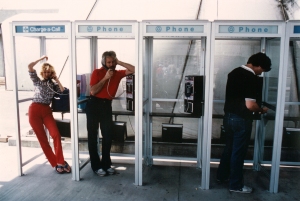
It turns out the story was part of a biographical series on a local developer. Who would have guessed?
We must unfortunately look at the bad as well as the good. CalCoastNews may have had the extreme best headline of our set, but it also produced the extreme worst: “Arroyo Grande, Grove Beach discussing police merger”. What’s wrong with that, you ask? Well, the article talks about future plans to merge the Arroyo Grande and Grover Beach police departments. Yeah, spelling is very important in headlines. The moment you put a misspelling in your headline, especially if it is for one of your featured top stories (like this one), you lose all credibility. So, yes; in headlines, spelling and grammar count. Arroyo Grande, Grover Beach discussing police merger would not have raised any eyebrows, but alas, the damage is done.
Remember:
- DO keep it sweet and simple, easy to understand
- DO make sure your headline encapsulates the most important information
- DON’T run a non-story. DO find out what people are doing, rather than what they are not doing.
- DO make sure any pictures you have thumbnailed to your headline is interesting.
- DO consider your audience. Who would want to read this, and why? What information will they want to get out of it?
- DO tease your audience. DON’T reveal everything up-front; make them want to know more.
- DON’T make any spelling or grammar errors.
Last WWI veteran dies – How does the media respond?
May 5, 2011 at 3:15 PM | Posted in Uncategorized | Leave a commentClaud Choules is dead. He was 110 years old. He was also the last known living combat veteran from World War I.

 Known as “Chuckles” to his friends, he was born in Britain but spent most of his life in Australia, dying at a nursing home in Perth.
Known as “Chuckles” to his friends, he was born in Britain but spent most of his life in Australia, dying at a nursing home in Perth.
Choules joined the Royal Navy in 1916, and a year later was on the HMS Revenge fighting the Germans in the North Sea. He witnessed the German fleet’s surrender at the end of the war. He continued his career in the military, helping Australia’s ports build their defenses against the Japanese in World War II.
I found his story from this article on the BBC’s website. The BBC provided the two pictures you see above, plus a video obituary, where we learn that he liked to fly in airplanes. They provide a brief summary of his life, describing how he became a pacifist in his later years.
I became interested in his story because my 100-year-old great-grandmother recently died after two years in a nursing home, and so I have been feeling a sort of empathy for the elderly. I began looking across the Web for more information about the man. The Associated Press did a video obituary of their own:
From their report, I learned that Choules was only 14 years old when he enlisted in the Royal Navy, and that he remembered the first automobile passing through his hometown. I also liked that their video provides a soundbyte from one of his grandchildren.
CNN did a photo slideshow on their site, showing more pictures of him as a young man, like this one:
The CNN article tended to focus more on his career after the First World War, while the BBC article tended to focus on his service during the war. I’m not sure why the difference in emphasis.
MSNBC’s article was far more text than anything, containing only two photos and no video. It did, however, have several lines of text highlighted. When you hover over them with your mouse, a little window pops up showing the Google search results for those words. It also talked about Choules’ autobiography, “Last of the Last”, and mentioned his brief stay in South Africa.
Lastly, I checked out the website of The West Australian, since he lived most of his life in Western Australia and died in Perth. This article was a huge disappointment. It only had one image, no links, and a huge block of plain text. It wasn’t even a locally-produced report; it used a wire service article on the man and his life that placed quotes from the Australian Defense Department and Prime Minister near the top. It seemed almost inhuman. It did, at least, mention one fact the other articles seemed to neglect: by the time he died, he was virtually blind and deaf.
I am left with a portrait of a man who lived a long, eventful life, but like all people who get up there in age, such as my great-grandmother, the last years were marked by failing health and the haunting knowledge that any day his time would come. And it finally has.
Kevin List – future sports columnist
May 3, 2011 at 5:38 PM | Posted in Uncategorized | Leave a commentKevin List is a senior at California Polytechnic State University and a Print Journalism major. He is a huge fan of the San Francisco Giants. And someday, you’ll be reading his sports reports in your local newspaper, at least if he gets his wish…
Social media has changed journalism. Just ask a journalist…
April 27, 2011 at 6:34 PM | Posted in Uncategorized | Leave a comment
A hard working reporter who seems to always be smiling, Monica says Facebook plays a huge role in how she does her job now.
When I interned at our local NBC affiliate, KSBY-TV, last winter, one of my jobs was to write web stories, post them on the channel’s Facebook page, and Tweet them. The other reporters were glad I did that; it meant less work for them as they tried to get their scripts and video editing done.
I guess it is only natural, then, that when I was assigned to interview a local journalist in our area about how social media sites like Facebook, Twitter, Reddit and Digg have changed how journalists work, I would end up picking someone I knew from the station.
Monica Quintero comes from Houston, and spent several years as an anchor in Oklahoma City. She has been a reporter for KSBY twice; when she came back a few years ago locals remembered her from 2002.
Monica is probably one of the friendliest people I have ever met. I have never seen her without a smile on her face. She was happy to talk to me about the role social media plays in her workday:
While I had my camera and tripod with me, I asked her if she was willing to show me what she does in her spare time.
After that, I had a bus to catch, so I said my “good-byes” and “thank yous” to her for being so helpful. It’s looking more and more like I had better get used to my Facebook and Twitter pages, based on what she told me.
Speaking of which, here is her Facebook profile.
REC CENTER EXPANSION SEES PROGRESS, BUT WON’T BE FINISHED UNTIL 2012
April 19, 2011 at 5:42 PM | Posted in Uncategorized | 1 CommentStudents walking past the Cal Poly Recreational Center this week are watching the planned additions cease to be “planned” and become “actual”. Glazers have been hard at work for the past two months installing the aluminum, steel, and glass to the overhang above the street-side entrance. A “chirr, chirr” can be heard as one worker on a boom lift rivets in the pressure plates that keep the overhang attached to the building. A “beep, beep” comes from the forklift dangling 2,000 to 3,000 lb. boxes of glass above workers’ heads, each box individually numbered and catalogued to ensure it gets installed in the right place.
Not all is good news for students looking forward to the expanded Rec Center, though. It has been announced that the remodel will not be completed until January of 2012, meaning that the project will have taken more than a year to be completed. This comes on top of earlier news that the Rec Center will be closed after June 13.
For senior Daniel Jeng, the project will be finished far too late. He says that he will have graduated by the time it is finished. “But I don’t think it is much of a problem, because you really can’t use the road since they blocked it off.” He remarks, referring to the street in front of the Rec Center that has been closed to most traffic. “My only concern would be for bikes coming down because it’s bottlenecked right there.”
At least one freshman is looking forward to the finished project, though:
Not only will the finished Rec Center be larger, it will also be greener. The glass being installed is a special energy-saving, UV-blocking, insulated glass that will help keep the Rec Center cool on hot days, which will make the whole building more energy efficient. Other plusses for the finished project include:
- Six new racquetball courts
- A large climbing wall
- Three new sand volleyball vourts
- A larger pool
Students will pay for the Rec Center after it opens through a permanent $65 fee increase. The project was approved after 75% of students approved it in a referendum in 2008.
GETTING OUT THE CLICKS: My Investigation into Social Media sites
April 13, 2011 at 7:46 AM | Posted in Uncategorized | Leave a comment I have an article on my blog I want people to read. Which social media site will get me the most readers? That is the question many bloggers face when trying to get the word out to the world. The reality is that there are so many social media sites around the World Wide Web to choose from it is hard to be sure who is logging on to what.
I have an article on my blog I want people to read. Which social media site will get me the most readers? That is the question many bloggers face when trying to get the word out to the world. The reality is that there are so many social media sites around the World Wide Web to choose from it is hard to be sure who is logging on to what.
So, I decided to do a little experiment. (Actually, my professor assigned me this experiment, but whatever.) I picked five social media sites and used each of them to promote my blog. I signed up for Reddit, Digg, LinkedIn, Tumblr, and Twitter. I would track how many people clicked the link to my blog, to determine which site was most effective.
 Reddit and Digg are like MySpace and Facebook, in the sense of being arch-competitors that have basically the same purpose. In this case, the purpose is to share articles on the Web. Users can follow other users to see what their friends are posting, or post articles themselves. There are functions to comment on articles and to “like” an article. (In Digg, they say you “Dugg” an article if you liked it.)
Reddit and Digg are like MySpace and Facebook, in the sense of being arch-competitors that have basically the same purpose. In this case, the purpose is to share articles on the Web. Users can follow other users to see what their friends are posting, or post articles themselves. There are functions to comment on articles and to “like” an article. (In Digg, they say you “Dugg” an article if you liked it.)
There are differences, though. In Reddit, you don’t have to just vote for an article or leave it; you can also vote AGAINST an article. These “up” and “down” votes will bring your page up and down the list of popular posts, influencing how many people see it. Digg’s main competitive edge is that it marks articles dugg by people you follow with a green circle. It will even tell you how many people you know dugg that article.
Both sites have advertizing as a revenue stream. Digg, though, leaves ads in one corner of the page, while Reddit includes both sponsored articles and ads on its page. Reddit also makes money from a feature called “Reddit Gold” that for $3.99 per month allows users to customize some aspects of their Reddit experience, like sorting articles by how controversial they are.
LinkedIn is a much more professionally themed social networking site. When you sign up for LinkedIn, you go through a multi-step process of registering your employer, your alma mater, your former employers, and people in your e-mail address book. LinkedIn then uses this to connect you with people who know people you know. The idea is that this will connect you to future jobs and promotions. You can post your resume on LinkedIn to attract job offers.
 Tumblr is almost a complete opposite. Tumblr is about your personal life, not your professional connections. It is what’s known as a “microblogging” site, where people can set up their own, mini-blog page to post information about themselves. These pages are just big enough for people to post artwork, recipes, comics, pictures, GIFs, and the like. When you follow someone’s Tumblr page, when you log in you will see whatever they have posted recently. You can visit their pages or edit your own.
Tumblr is almost a complete opposite. Tumblr is about your personal life, not your professional connections. It is what’s known as a “microblogging” site, where people can set up their own, mini-blog page to post information about themselves. These pages are just big enough for people to post artwork, recipes, comics, pictures, GIFs, and the like. When you follow someone’s Tumblr page, when you log in you will see whatever they have posted recently. You can visit their pages or edit your own.
Twitter is by far the most well-known of these sites. You post 140-character “tweets”, and can read the “tweets” of other people on Twitter. You can also send personal messages to other users. Almost every website these days has a link to let people “tweet” their articles.
One thing in common with all of these sites was that just posting something isn’t enough to get attention. You can’t just expect people to passively find you. You have to go out and connect with people. You follow them (or, in LinkedIn, “Connect” with them) and try to get them to follow you back. The more active you are, the more attention you are likely to get. Of course, I also had to give my article a catchy title to get attention.
So, what were my results? Well, on my first day of the experiment I got 12 views from Reddit and two from Twitter. Two days later, I got 45 Reddit-referred views. I got another Reddit view on day four, and this one left me a comment. Nothing at all from Digg, LinkedIn, or Tumblr. What a disappointment.
Experiment Results: Visits to my blog referred by the five social media sites.
So, it looks like Reddit is the definite winner, hands-down. I got 58 people viewing my site through Reddit, to a measely two for Twitter and zero for the others. If you want lots of people to see your blog, therefore, you should use Reddit to get the word out.
Two wanted after Meth Lab raid in Paso Robles
April 12, 2011 at 5:00 PM | Posted in Uncategorized | 2 CommentsPolice raided a suspected meth lab at the 4000 block of Prarie Rd. outside Paso Robles Thursday, and now they are after two more people allegedly connected to the lab.
Deputies from the San Luis Obispo County Sheriff’s Department approached the property, where there were two buildings: a front house and a main house. They arrested 42-year-old Teri Lee Ann Milton in the front house and arrested her for possessing methamphetamine and violating her probation. They then moved to the main house, where they believe 43-year-old David Dene Manning was cooking meth. They seized him out back of the building and charged him with possessing the ingredients of methamphetamine as well as the drug itself.
Now police are looking for two other people suspected of being tied to Manning: Ryan Hansen Black, 28, of Paso Robles and his girlfriend, Airis Elaine Biddle, 19. The duo are also wanted in connection with a burglary investigation. They are known to drive a white late-model Chevy pickup truck with after-market rims. Biddle is considered armed and dangerous.
Blog at WordPress.com.
Entries and comments feeds.
